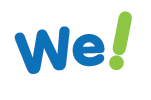As educators, trainers, or facilitators, our goal is always to make information memorable. While it’s unrealistic to expect people to remember everything, there are strategies to increase retention. I recently led a workshop series, “Engaged to Educate,” where we explored these techniques.
The Power of Contribution in Learning
One fundamental approach is designing content for contribution. This involves shifting from traditional, material-focused teaching methods to more engaging, student-centered ones. For instance, consider the difference between a chemistry professor following a rigid textbook syllabus and Alfred Poor, a retired teacher who used a “45-Minute Question Storm” on the first day of class to spark students’ curiosity. Poor’s method effectively personalized learning, weaving students’ questions into the curriculum and making the content more memorable.
Techniques for Engaging and Remembering
During our workshop, we experimented with various interactive methods:
- Popcorn Responses: This exercise involved rapid, spontaneous sharing of ideas or answers to a question, helping to foster a sense of connection and readiness for learning.
- The SUCCESS Framework: Drawing from Chip and Dan Heath’s book “Made to Stick,” we discussed seven characteristics that make content memorable. These include simplicity, unexpectedness, concreteness, credibility, emotions, and stories.
- Inviting Personal Stories: We asked participants to share a memorable moment, emphasizing personal connections and the power of storytelling in making content stick.
- Practicing Specificity: To emphasize the importance of details, participants were challenged to find and share a unique fact about Chip and Dan Heath within a limited time, highlighting the role of specificity in making information more engaging and memorable.
The Role of Storytelling and Curiosity
Our discussions also delved into why storytelling is such an effective tool in education. Stories naturally create a ‘knowledge gap’ or a curiosity that compels listeners to lean in and engage, eager to discover what happens next.
Conclusion
The workshop demonstrated that when content is designed with the audience’s participation and curiosity in mind, it becomes more impactful and memorable. By integrating techniques like storytelling, personal contribution, and the SUCCESS framework, educators can create a learning experience that not only educates but also sticks with the audience long after.
